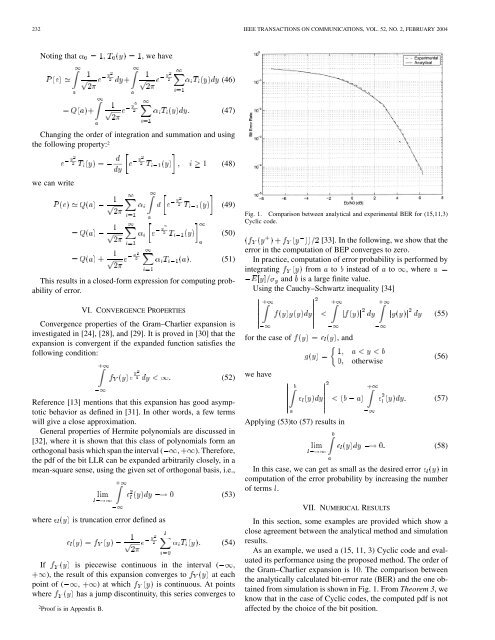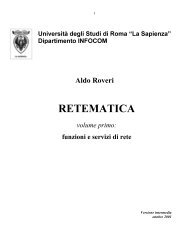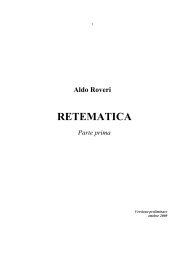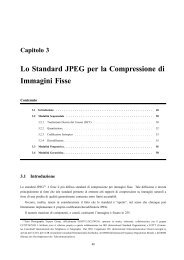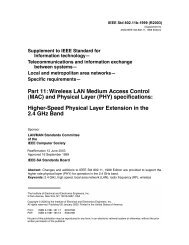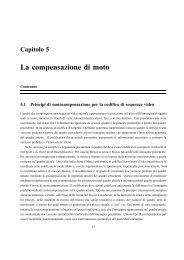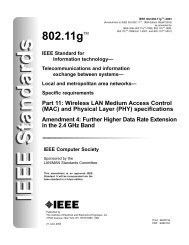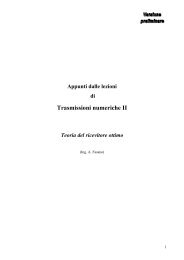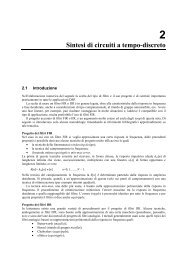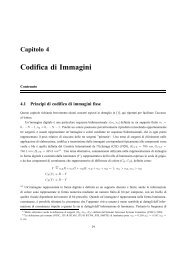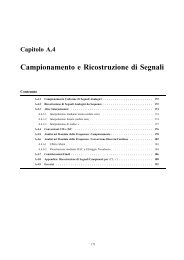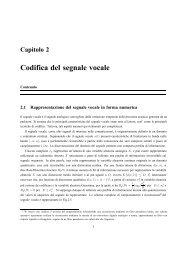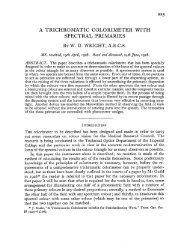An Analytical Method for Approximate Performance ... - IEEE Xplore
An Analytical Method for Approximate Performance ... - IEEE Xplore
An Analytical Method for Approximate Performance ... - IEEE Xplore
Create successful ePaper yourself
Turn your PDF publications into a flip-book with our unique Google optimized e-Paper software.
232 <strong>IEEE</strong> TRANSACTIONS ON COMMUNICATIONS, VOL. 52, NO. 2, FEBRUARY 2004<br />
Noting that , ,wehave<br />
(46)<br />
(47)<br />
Changing the order of integration and summation and using<br />
the following property: 2<br />
we can write<br />
(48)<br />
(49)<br />
(50)<br />
(51)<br />
This results in a closed-<strong>for</strong>m expression <strong>for</strong> computing probability<br />
of error.<br />
VI. CONVERGENCE PROPERTIES<br />
Convergence properties of the Gram–Charlier expansion is<br />
investigated in [24], [28], and [29]. It is proved in [30] that the<br />
expansion is convergent if the expanded function satisfies the<br />
following condition:<br />
(52)<br />
Reference [13] mentions that this expansion has good asymptotic<br />
behavior as defined in [31]. In other words, a few terms<br />
will give a close approximation.<br />
General properties of Hermite polynomials are discussed in<br />
[32], where it is shown that this class of polynomials <strong>for</strong>m an<br />
orthogonal basis which span the interval ( , ). There<strong>for</strong>e,<br />
the pdf of the bit LLR can be expanded arbitrarily closely, in a<br />
mean-square sense, using the given set of orthogonal basis, i.e.,<br />
where is truncation error defined as<br />
(53)<br />
(54)<br />
If is piecewise continuous in the interval ( ,<br />
), the result of this expansion converges to at each<br />
point of ( , ) at which is continuous. At points<br />
where has a jump discontinuity, this series converges to<br />
2 Proof is in Appendix B.<br />
Fig. 1. Comparison between analytical and experimental BER <strong>for</strong> (15,11,3)<br />
Cyclic code.<br />
[33]. In the following, we show that the<br />
error in the computation of BEP converges to zero.<br />
In practice, computation of error probability is per<strong>for</strong>med by<br />
integrating from to instead of to , where<br />
and is a large finite value.<br />
Using the Cauchy–Schwartz inequality [34]<br />
<strong>for</strong> the case of , and<br />
we have<br />
Applying (53)to (57) results in<br />
otherwise<br />
(55)<br />
(56)<br />
(57)<br />
(58)<br />
In this case, we can get as small as the desired error in<br />
computation of the error probability by increasing the number<br />
of terms .<br />
VII. NUMERICAL RESULTS<br />
In this section, some examples are provided which show a<br />
close agreement between the analytical method and simulation<br />
results.<br />
As an example, we used a (15, 11, 3) Cyclic code and evaluated<br />
its per<strong>for</strong>mance using the proposed method. The order of<br />
the Gram–Charlier expansion is 10. The comparison between<br />
the analytically calculated bit-error rate (BER) and the one obtained<br />
from simulation is shown in Fig. 1. From Theorem 3,we<br />
know that in the case of Cyclic codes, the computed pdf is not<br />
affected by the choice of the bit position.


